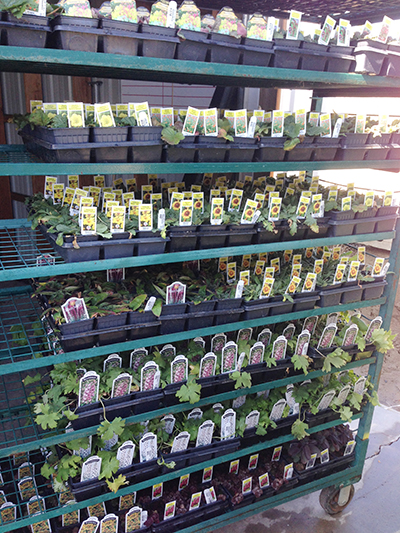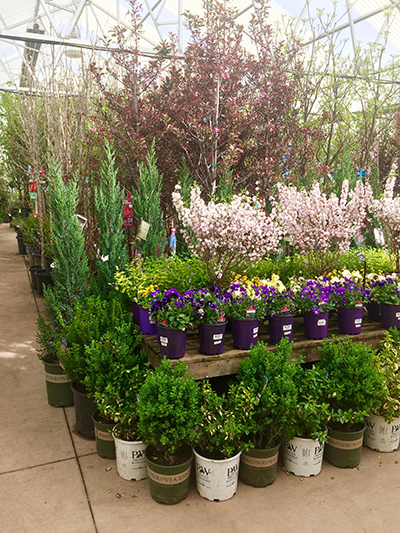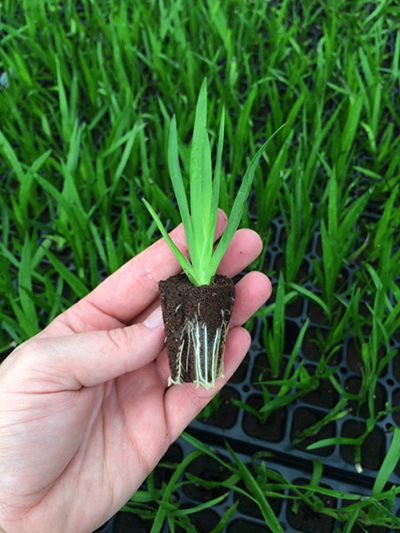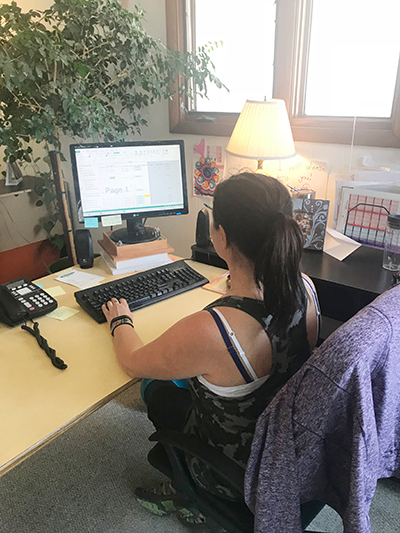What does it mean to broaden a supplier base?
- Beth Gulley: We buy through a lot of broker representatives, so broadening that base partly means you are spreading out all those pieces of the pie to different broker organizations. It also means finding more vendors who can supply unique products.
- Bob Gallatin: Broadening a supplier base has two main purposes: ensuring a supply of existing products and bringing in new items. With a broadened supplier base, you will have more suppliers for the items currently being purchased, and you can bring new items into the business, adding different lines of products, to add appeal and increase interest for customers.
Why is it a good idea to broaden your supplier base?
- Gulley: You can get more competitive pricing, or different payment terms, which help get you through the season. Freight is becoming another issue; certain suppliers have lower freight rates, which can benefit you.
For us, broadening our supplier base is mostly about obtaining a good product mix and ensuring high quality. The more suppliers you have, the more unique your mix of products can be. Some suppliers have specialties such as topiary lavender or other niche products. Others have exclusive varieties or access to exclusive varieties. If we are unhappy with a supplier because the quality is getting worse, we know it’s time to look for a new supplier.
- Gallatin: First and foremost, what a company needs to do is make sure it has a continuous supply of products for customers. If you rely on one source, sometimes that one source may have a problem, which can have a significant impact on your business. Particularly in a business very impacted by seasons, like a nursery, if you have trouble during your critical time of year, it can be devastating.
Also, a current supplier may not be able to supply new items that will drive more traffic to your business. Broadening your supplier base brings opportunities to expand your product line with unique and high quality options.
Current suppliers should not become complacent. You should be able to rely on them for marketing and product ideas. Sometimes new suppliers can bring in new ideas as well as keep old suppliers on their toes. Having two suppliers helps you stay aggressive in pricing, as you can get quotes from two different companies. But, you need to understand the price and whether it is competitive for the quality you are looking for. Quality is uppermost for green industry businesses; it doesn’t take much to turn off clients if plants are not high quality.
 Is it wise to have more than one supplier for each product?
Is it wise to have more than one supplier for each product?
- Gulley: It’s definitely good to have a backup. A lot of times, especially for our young plants program, we make it a requirement to have two sources. If one supplier drops the ball, we can still keep that line item as part of the program through another supplier.
- Gallatin: As your business grows, can current suppliers supply your needs? Having a backup, second supplier ensures that there is no interruption in supply. That doesn’t mean splitting all product orders 50/50. Maybe a second supplier doesn’t supply the full line but only certain products on a regular basis, with the ability to supply the full line if needed.
 Is selecting companies from different locations a good way to broaden a supplier base?
Is selecting companies from different locations a good way to broaden a supplier base?
- Gulley: For greenhouse products, having suppliers in different locations is not as critical. Even if suppliers are in the same area or state, they will not likely be impacted by pests or viruses at another supplier. While it’s important to have multiple suppliers of a variety in case of a crop contamination at one, a nearby supplier should be fine. On the nursery side, the actual physical location could be important, when suppliers are dealing with drought and pests, so selecting suppliers from at least two different states or regions may be helpful. In either case, picking different suppliers based on location can help with freight costs. For instance, it is often cheaper to get products from states that don’t require mountain travel to get to your company.
- Gallatin: If certain geographic areas are conducive to the growth of different plants, supplier location matters. It wouldn’t be such a concern with hard goods and tools. However, warehouse location can be important. Having a supplier with a warehouse close to you would be helpful when you need products quickly. A supplier’s location can also impact transportation costs, which would be important.
 How does company age factor into broadening a supplier base?
How does company age factor into broadening a supplier base?
- Gulley: Generally, we don’t pay attention to the size or age of companies, though some small companies have higher prices, and price is important. The age of a supplier can be important when you are looking for a record of performance and references, but sometimes new companies offer a fresh difference worth trying. Word of mouth is important in purchasing, but seeing is believing. Even if a company has a good reputation, you have to try them out to make sure their quality and service match your expectations.
- Gallatin: The length of time in business can be a factor in supplier selection, but should not be the only factor. New businesses can be more attentive, because without a history of established customers, they need to work harder to get new customers. If a supplier has been around for a while, try to figure out who their customers are and contact them to find out if the supplier lives up to its promises such as for delivery time and quality.
 What are the disadvantages of broadening your supplier base?
What are the disadvantages of broadening your supplier base?
- Gulley: With more suppliers, instead of getting one huge shipment in, you are getting several little shipments in a week, so tracking can be difficult. Every supplier has different methods of tagging their products, so it’s more complicated when accepting deliveries. Another con is pricing; sometimes the more you pool together your order, you can get a volume price, that you can’t get if you are splitting up into smaller orders.
- Gallatin: New suppliers can cause problems if they promise but do not deliver as expected or on time.
How can you determine if a new supplier is a good fit?
- Gulley: We do a small but sufficient sample order with the new supplier to get a clear understanding of how their quality compares. Service is definitely important, too. If you can get the same quality from different suppliers, but you have a better working relationship with one, you know they will make things right if problems do happen. Building a history of trust working together helps them respond quickly to product issues. Honestly, on the wholesale side, we try to order from companies that order from us, so we’ll do test orders with companies that we are also supplying.
- Gallatin: You don’t want to just jump into a new supplier relationship; you need to test them. Find out if their salesperson is knowledgeable and accessible. Their salespeople need to have an interest in your business success, not just theirs. Before placing an order, look at what the new supplier offers besides products. Do they bring ideas as well as an understanding of your needs? If not, you may want to continue looking for another supplier.
 How can you avoid hurting relationships with current suppliers?
How can you avoid hurting relationships with current suppliers?
- Gulley: I would say the best way to get into a new supplier is find a new product you want to try and set up an order around that. If your current supplier sees product from the new supplier on your property, you can say we’re trying a new product. Honesty is the best. If they ask you straight up, I don’t think they will be hurt if you say prices were too high or you needed a different variety. I find that nine times out of ten, if I am honest with a supplier, they almost knew it was happening already — it’s not a huge shock to them.
- Gallatin: Some suppliers will be offended when they find out you have a new supplier. Relationships can be difficult to manage unless there is a concerted effort on building relationships. A relationship is a two-way street, from the standpoints of both customers and suppliers. Both have to work on it, and never take anything for granted. Every day is a new opportunity — you deliver or you lose.
What are other tips on developing a successful supplier base?
- Gulley: Broadening your supplier base allows you to work with more people in the industry, which is positive for everyone. You just need to stay organized. If you forget where an order was placed and mistakenly ask the wrong supplier about it, everyone’s feelings can get hurt. One key to my success is keeping one supplier through only one broker to streamline orders and get volume discounts. If you order different products from the same supplier through three different brokers, it becomes a muddy mess.
- Gallatin: Suppliers want a sense of loyalty and commitment from clients, but they also know they must hold up their end. If you are happy with an existing supplier, you also have to work on maintaining the relationship; it goes both ways. If the supplier knows they have 100 percent of your business, and they lose some to another supplier, it requires communication. Be up front with them. Let them know your business is getting to the point that you need a second supplier, but assure them you value the relationship and will continue working with them.


Resource
SCORE is the nation’s largest network of volunteer, expert business mentors, with more than 10,000 volunteers in 300 chapters. As a resource partner of the U.S. Small Business Administration, SCORE helps entrepreneurs from startups to existing businesses through mentoring, workshops and educational resources. Mentors have a broad base of knowledge from legal to marketing to nonprofit leadership. Learn more and locate your nearest SCORE office at score.org/find-mentor.










